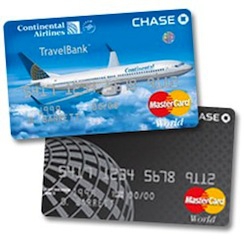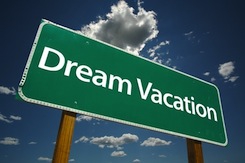Learn how to accumulate frequent flyer miles and when to cash in for that free flight.
Everyone is a fan of a free flight. But what’s the best way to accumulate points towards that free ticket? And when does it make sense to redeem those reward miles? Here’s an overview of how to accumulate frequent flyer miles and then cash them in to fly free through those friendly skies.
Accumulating frequent flyer miles
Beyond racking up miles every time you fly, there are basically two ways to accumulate frequent flyer miles: through purchases made on a credit card affiliated with an airline, or through purchases made on a bank credit card that offers travel rewards. While both cards serve the same purpose—helping you accumulate airline miles as you spend—they operate very differently.
Airline credit cards are an easy way to accumulate miles, thanks to the many partner companies affiliated with the airline that offer reward miles in addition to the points you earn on every dollar spent. Redeeming those points, however, isn’t as easy. Because airlines prefer to fill their flights with paying customers, those trying to cash in on a reward flight can face black-out date, restrictions and significant advance-purchase requirements.
Bank credit cards that offer travel rewards have nearly opposite issues. Their great advantage is the ease with which free tickets can be redeemed. Because bank programs purchase the airline seat for the card holder, there typically are fewer, if any, restrictions. The downside of these programs, however, is that card holders generally only earn miles when making purchases with the card—and then only for the amount of the purchase. Since card holders are missing out on the opportunity to earn miles in addition to points, it tends to take longer to earn that free ride.
When to redeem your frequent flyer miles
To determine if it’s time to redeem your miles, you’ll need to do some simple math. Large U.S. airlines typically require 25,000 miles for a round-trip ticket within the continental U.S. Miles are worth about 1.5 cents, which means it’s essentially costing you $375 to “pay” for your flight. Next, check the retail cost of the ticket. If it costs more, then it likely make sense for you to use your miles.
For those of us who are numerically challenged, you can have acruw.com do the math for you. Simply enter in your member number and password for each rewards card you hold and the site will tell you the dollar value of your points. (And the site’s nifty “Points or Pay” calculator lets you know whether it’s worth it or not to cash in your miles.)
In general, you want to redeem miles for very expensive flights, last-minute trips or when you want to save your vacation cash for other trip expenses.
When not to use frequent flyer miles
The most obvious time you don’t want to use your frequent flyer miles is when the ticket costs less than it would to redeem your miles. Always price the flight first to determine whether or not it makes sense to use miles rather than pay cash. The same goes for when you’re considering purchasing miles to get the number you need for that free ticket. It might be better to wait until you can naturally accumulate enough points first.
Redeem your frequent flyer miles
When redeeming your miles, plan ahead when possible in order to get the best deals and dates. Just be sure to check when your points expire—you don’t want to lose them before you’ve had a chance to use them! If you don’t have enough miles for a free ticket, consider using the miles you do have to upgrade your seat on a long flight.
You can track travelers’ redemption-success rates by airline through WebFlyer’s Award/Upgrade Index.
Looking to open an account with an airline-affiliated credit card but not sure if it’s right for you? Learn more about getting the best mileage for your money with airline reward credit cards.
Related Articles:
- Car Rental Fees You Can Avoid
- How To Get A Refund On Your Airfare
- Airline Rewards Credit Cards - Get the Best Mileage for Your Money
- Affordable vacations: How to travel on the cheap
- How to sell your vacation timeshare
- Have phone, will travel: Travel apps for your next vacation
- How to buy and rent a vacation home
- What Is The Passport Card?
- 5 Tips For Improving Your Credit Score
- How to Improve Your Credit Score
- What is a Credit Score?
- Buying A Gift Card? What You Need To Know.
 Print
Print Email
Email









